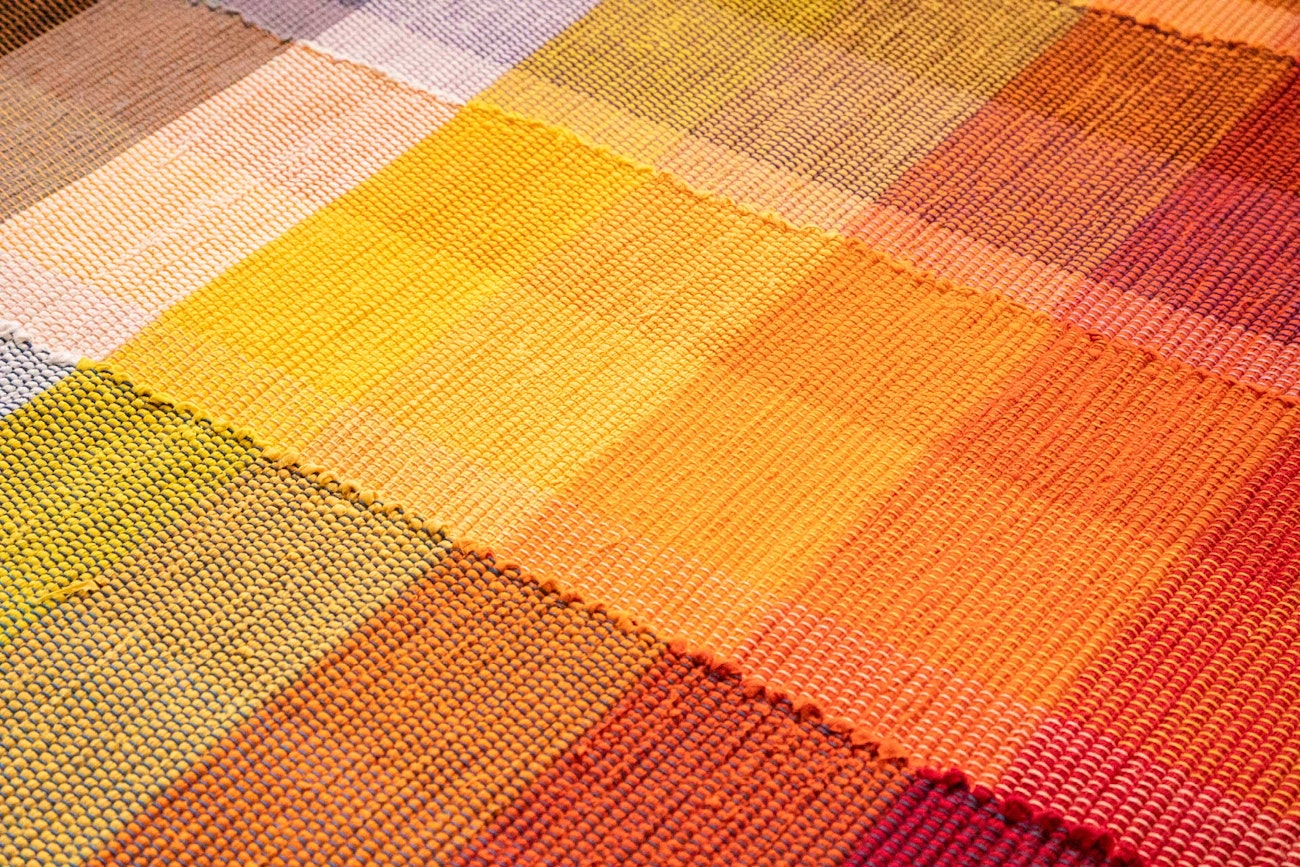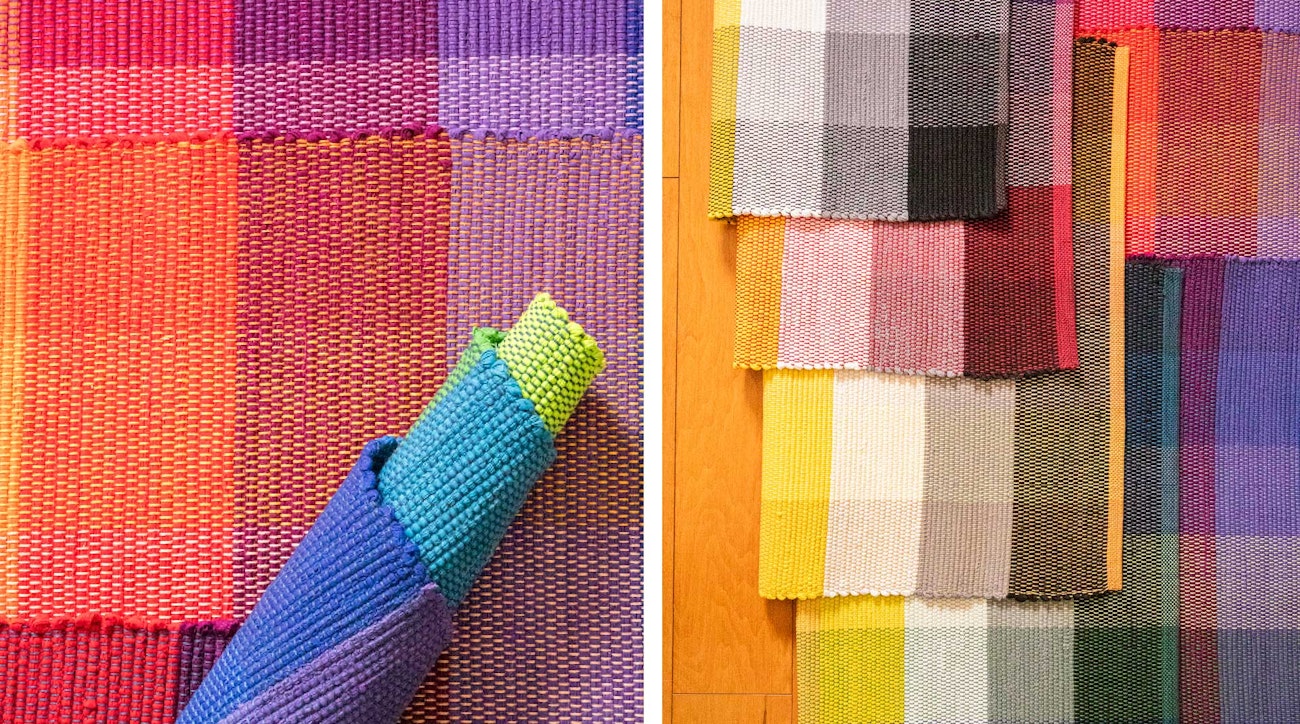The inspiration for this piece came months ago, as the Handwoven team watched a draft version of Tom Knisely’s new rag rug video course. Everyone remarked about how clever his rug gamps were, and we immediately asked Tom to write about creating them for the Handwoven Summer 2024 issue. That issue is out now.
Tom‘s new video is live, too. Watch him explain how he uses the gamps—and get all his tips for weaving rag rugs in the new How to Weave a Rag Rug video.
A gamp is a marvelous weaving tool. What is a gamp? It’s like a sampler that weavers use to study multiple threadings and treadlings, or (one of my favorites), color interactions.
Color gamps use several colors as warp stripes—they could be a range of neutral colors, or all the primary and secondary colors on a color wheel, or a rainbow order of red, orange, yellow, green, blue, indigo, and violet. You could thread a monochromatic gamp in blues going from the lightest shade to the darkest. The weft is woven in the same color order as the warp, or what is called tromp-as-writ. As you weave, you‘ll clearly see how the warp and weft colors interact with each other.

Even though the 8/4 cotton warp is relatively small compared to the thick rag weft, warp color can make a big difference in how the weft appears.
I wondered whether making a color gamp for rag weaving would prove to be a valuable way to learn what happens when colored rags are woven into different color families of warp ends.
Planning a rag rug color gamp
My excitement took me to the fabric store to buy solid-colored fabrics in primary, secondary, and tertiary colors. I was in luck when I found the quilters’ cotton fabrics. I used a color wheel to help me pick out the 12 colors needed for my experiment in addition to black, gray, and white. Because I didn’t know exactly how much fabric I would need, I purchased 5 yards of each color so I would have long strips of fabric to work with. That gave me more than enough weft for this experiment, with plenty of leftovers for other rugs later.
I washed the fabrics in hot water on a regular cycle to tighten them up, and dried them on a regular setting. To prepare my weft, I tore each length of cloth into 1½-inch strips and tapered the ends. I knew I wanted to warp and weave four different color gamps: neutrals, reds and purples, yellows and oranges, and blues and greens. Each piece of fabric produced twenty-one 1½-inch strips. I put aside five strips of each fabric color for each gamp.
I started preparing myself to warp my loom four times for this color study. I knew that I wanted to weave each of the weft colors for about 4 inches and that each warp color would be about 4 inches wide. If I wanted to weave all 12 colors plus the three neutrals, I would need 60 inches of warp for the color areas. I added 12 inches for 20 percent take-up and 36 inches for hems and loom waste, for a total of 3 yards for the warp length.
The resulting color gamps you see here have been invaluable resources when choosing project colors.

Left: The value of warp yarn also affects the weft. Jewel-tone rags are the star of the show with a darker warp but fade to the background when paired with a lighter warp. Right: Tom’s rag-weaving color gamps are invaluable resources when it’s time to choose project colors.
I hope you try weaving your own color gamps and experience the fun of seeing how different colors play together in your warp and weft.
To read more about Tom's rag rug gamp experiment, and for the charts showing his warp color orders, visit Handwoven Summer 2024. You can also find those charts as well as more photos of the gamps in his book Weaving with Rags.
TOM KNISELY is the resident weaving and spinning instructor for Red Stone Glen Fiber Arts Center. He is a regular contributor to Handwoven and has written five books on weaving.

